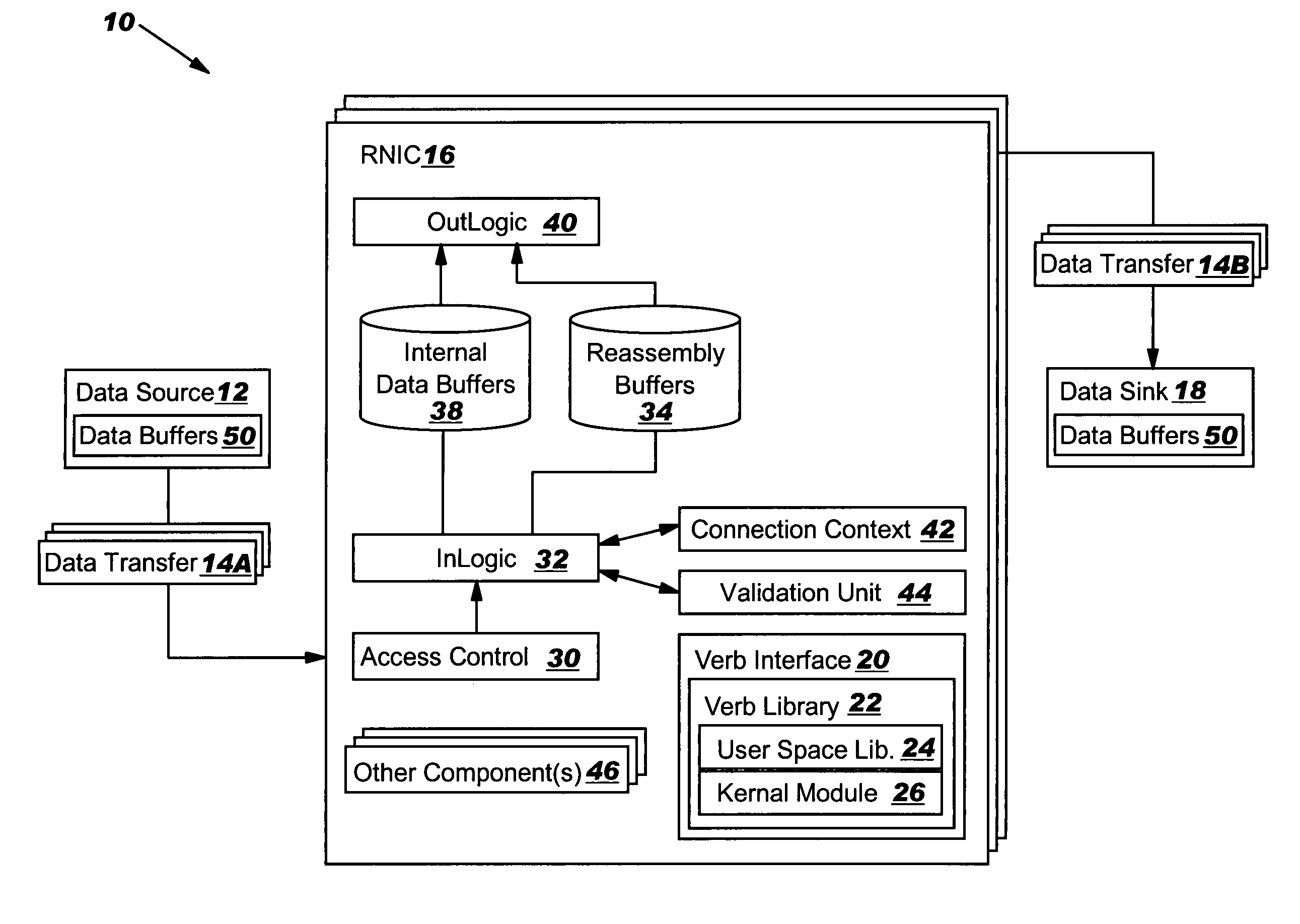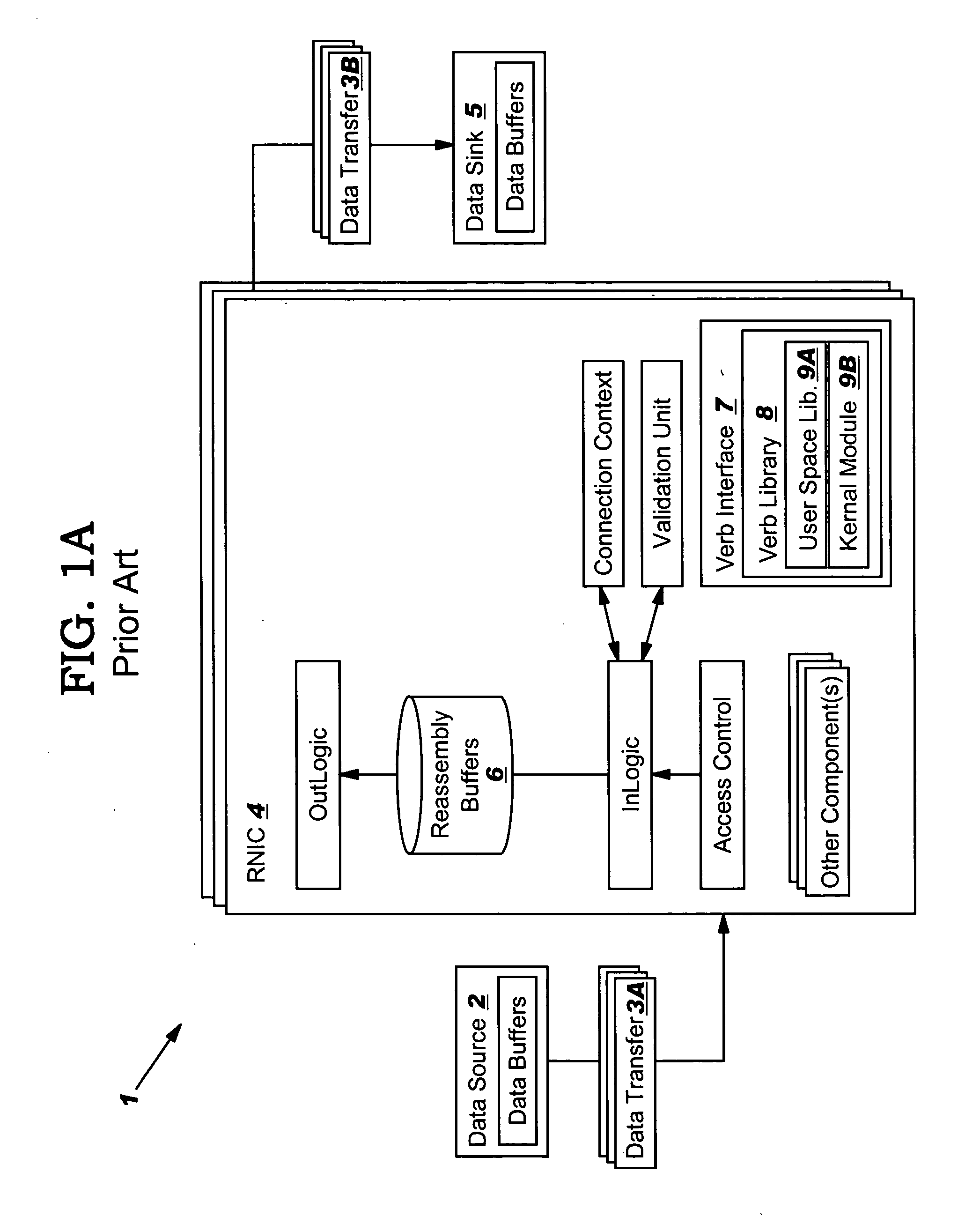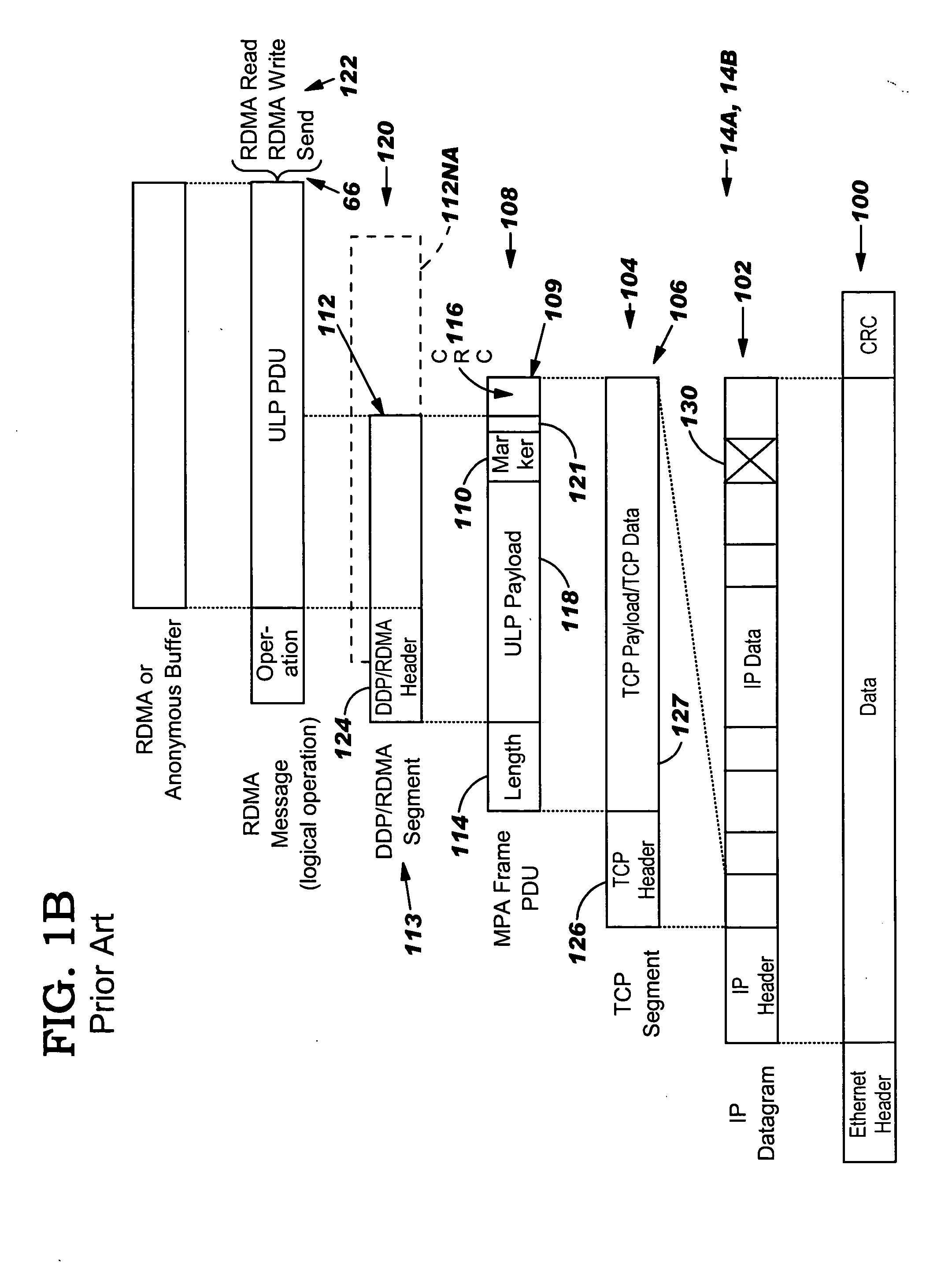Data transfer error checking
a data transfer and error checking technology, applied in the field of data transfer, can solve the problems of large burden on a 2 ghz cpu, common 1 gbps network connection, large communication bandwidth increase, etc., and achieve the effects of reducing memory bandwidth, efficient recovery, and reducing latency
- Summary
- Abstract
- Description
- Claims
- Application Information
AI Technical Summary
Benefits of technology
Problems solved by technology
Method used
Image
Examples
Embodiment Construction
[0057] The following outline is provided for organizational purposes only: I. Overview, II. InLogic, III. OutLogic, and IV. Conclusion.
I. Overview
[0058] A. Environment
[0059] With reference to the accompanying drawings, FIG. 2A is a block diagram of data transfer environment 10 according to one embodiment of the invention. Data transfer environment 10 includes a data source 12 (i.e., a peer) that transmits a data transfer 14A via one or more remote memory data access (RDMA) enabled network interface controller(s) (RNIC) 16 to a data sink 18 (i.e., a peer) that receives data transfer 14B. For purposes of description, an entity that initiates a data transfer will be referred to herein as a “requester” and one that responds to the data transfer will be referred to herein as a “responder.” Similarly, an entity that transmits data shall be referred to herein as a “transmitter,” and one that receives a data transfer will be referred to herein as a “receiver.” It should be recognized th...
PUM
 Login to View More
Login to View More Abstract
Description
Claims
Application Information
 Login to View More
Login to View More - R&D
- Intellectual Property
- Life Sciences
- Materials
- Tech Scout
- Unparalleled Data Quality
- Higher Quality Content
- 60% Fewer Hallucinations
Browse by: Latest US Patents, China's latest patents, Technical Efficacy Thesaurus, Application Domain, Technology Topic, Popular Technical Reports.
© 2025 PatSnap. All rights reserved.Legal|Privacy policy|Modern Slavery Act Transparency Statement|Sitemap|About US| Contact US: help@patsnap.com



